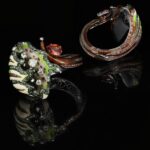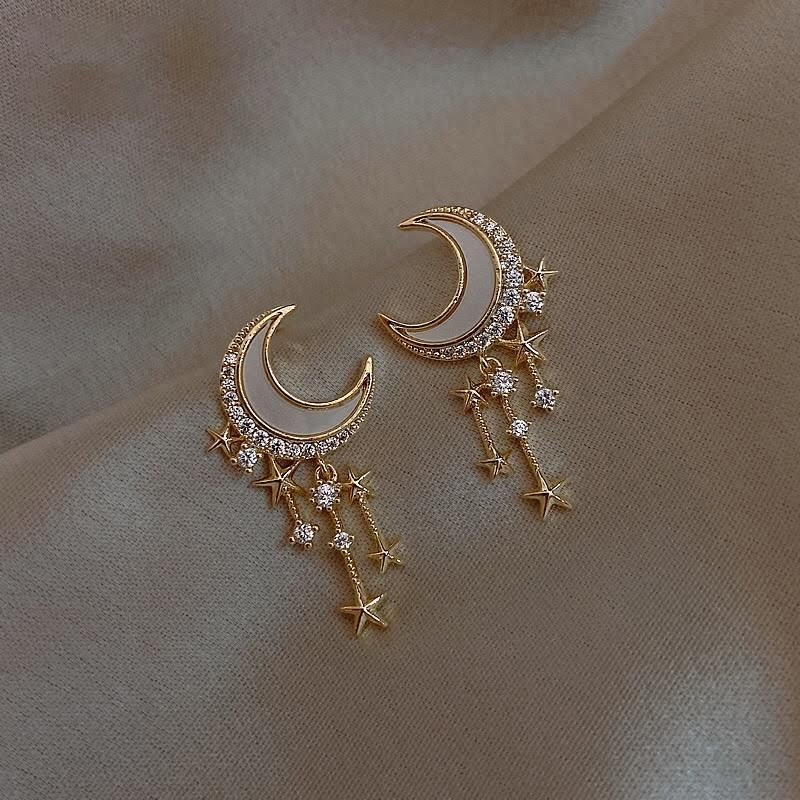Jewelry is not only a fashion statement, but also a treasured possession that holds sentimental value for many. Over time, however, jewelry can become dull and tarnished due to exposure to various elements. While there are professional jewelry cleaning services available, they can be expensive and may use harsh chemicals that may damage your beloved pieces. This is why learning how to make DIY jewelry cleaner can be both important and cost-effective.
By making your own jewelry cleaner, you have the opportunity to use natural ingredients that are gentle on your precious items. Not only does this ensure that you maintain the quality of your jewelry, but it also allows you to save money in the process. With just a few simple ingredients that you may already have in your pantry or bathroom cabinet, you can create an effective cleaning solution that will leave your jewelry sparkling like new.
Understanding the different types of jewelry and their cleaning needs is crucial when it comes to DIY jewelry cleaning. Different metals, such as silver and gold, require specific care methods to avoid causing any damage or discoloration.
Furthermore, gemstones come in a variety of types and each one has its own set of requirements to maintain their shine and brilliance. By familiarizing yourself with these nuances, you can tailor your DIY jewelry cleaner recipe accordingly and ensure the best results for each piece.
In this article, we will guide you through the process of making your own DIY jewelry cleaner step-by-step. We will provide you with a list of essential ingredients needed for the homemade solution and explain their properties so that you understand why they work effectively on different types of jewelry. Additionally, we will share helpful tips and tricks for cleaning specific types of jewelry such as silver, gold, and gemstones.
By the end of this article, not only will you have a thorough understanding of how to make DIY jewelry cleaner but also gain insights into common mistakes to avoid when using it and learn about proper storage techniques for maintaining the cleanliness and shine of your jewelry. And for those who prefer ready-made options, we will also explore alternative commercial products.
So, get ready to bring back the luster and sparkle to your jewelry without breaking the bank with our comprehensive guide on DIY jewelry cleaner.
Understanding different types of jewelry and their cleaning needs
One of the most important aspects of DIY jewelry cleaning is understanding the different types of jewelry and their specific cleaning needs. Many people mistakenly assume that all jewelry can be cleaned in the same way, but this is not the case. Different materials and gemstones require different methods and solutions to ensure they are properly cleaned without causing any damage. In this section, we will explore some common types of jewelry and discuss their specific cleaning requirements.
Gold Jewelry
Gold jewelry is relatively easy to clean and maintain. To clean gold jewelry, you can create a simple solution using warm water and a few drops of mild dish soap. Soak the gold pieces in the solution for a few minutes before gently scrubbing them with a soft-bristled toothbrush. Rinse thoroughly with warm water and pat dry with a soft cloth.
Silver Jewelry
Silver jewelry tends to tarnish over time due to exposure to air and moisture. To remove tarnish from silver, create a paste by mixing baking soda and water until it forms a thick consistency. Apply the paste onto the silver using a soft cloth or sponge, rubbing it gently in circular motions. Rinse off the paste with warm water and dry the silver thoroughly using a soft cloth.
Gemstone Jewelry
Gemstone jewelry requires special attention as certain cleaning methods may be too harsh for delicate gemstones. It’s important to research each specific gemstone before attempting to clean it. Some gemstones, like diamonds or sapphires, can be cleaned using warm soapy water and a soft brush, while others may require more gentle care or even professional cleaning.
By understanding the unique characteristics of each type of jewelry, you can ensure that they are properly cared for during the cleaning process. Remember to always research specific cleaning recommendations for your particular pieces to avoid any potential damage or loss of value.
Essential ingredients for making your own DIY jewelry cleaner
One of the key aspects of creating your own DIY jewelry cleaner is understanding the essential ingredients that are needed. By using the right ingredients, you can effectively clean your jewelry and remove dirt, oils, and tarnish without causing any damage. Here are some of the essential ingredients commonly used in DIY jewelry cleaners:
- Dish Soap: Dish soap is a gentle yet effective ingredient for cleaning most types of jewelry. It helps to remove grease, grime, and dirt without being too harsh on delicate surfaces.
- Ammonia: Ammonia is a powerful cleaning agent that can help remove heavy tarnish from silver and gold jewelry. However, it should be used with caution as it can cause discoloration or damage certain gemstones.
- Baking Soda: Baking soda is a versatile ingredient that acts as a mild abrasive. It can be mixed with water to create a paste for gently scrubbing away stains and tarnish on metal surfaces.
- Vinegar: Vinegar is acidic and can be used to dissolve mineral deposits on certain types of jewelry, such as silver or brass. However, like ammonia, it should be used sparingly as it may damage certain gemstones.
- Salt: Salt is an abrasive ingredient that can help scrub away tarnish and stains on metal surfaces. It can be mixed with other ingredients like dish soap or lemon juice to create an effective cleaning solution.
It’s important to note that not all jewelry materials are suitable for DIY cleaning solutions. Some gemstones, like pearls or opals, are delicate and require specialized care. Always do thorough research or consult with a professional jeweler before attempting to clean any valuable or delicate pieces of jewelry.
| Ingredient | Common Uses |
|---|---|
| Dish Soap | Gentle cleaning for most types of jewelry |
| Ammonia | Removal of heavy tarnish on silver and gold jewelry (use with caution) |
| Baking Soda | Mild abrasive for scrubbing stains and tarnish on metal surfaces |
| Vinegar | Removal of mineral deposits on certain types of jewelry (use sparingly) |
| Salt | Abrasive ingredient to scrub away tarnish and stains on metal surfaces |
Section #3
Gather the necessary supplies
Before you start making your DIY jewelry cleaner, it’s important to gather all the necessary supplies. Here are the ingredients and tools you will need:
- Bowl or container: Choose a bowl or container that is large enough to hold your jewelry pieces and allows for easy mixing.
- Warm water: Use warm water to help dissolve dirt and grime from your jewelry. Avoid using hot water as it can damage certain gemstones or delicate materials.
- Mild dish soap: Look for a mild dish soap that is free from harsh chemicals or abrasives. This will effectively clean your jewelry without causing any damage.
- Baking soda: Baking soda is an excellent cleaning agent for removing tarnish from silver jewelry. It also helps to lift dirt and eliminate odors.
- Toothbrush or soft-bristle brush: Use a toothbrush or a soft-bristle brush to gently scrub your jewelry and remove any debris.
Step-by-step instructions
Once you have gathered all the necessary supplies, follow these step-by-step instructions to create your DIY jewelry cleaner:
- Fill the bowl with warm water: Start by filling the bowl with enough warm water to fully submerge your jewelry pieces.
- Add a few drops of mild dish soap: Add a few drops of mild dish soap into the bowl of warm water. Be careful not to add too much, as it can leave residue on your jewelry.
- Optional: Add baking soda for silver jewelry: If you are cleaning silver jewelry, sprinkle a small amount of baking soda into the bowl along with the dish soap.
- Mix well: Gently mix the water, dish soap, and optional baking soda together until they are well combined.
- Submerge your jewelry: Place your jewelry pieces into the bowl, ensuring that they are fully submerged in the cleaning solution.
- Let it soak: Allow your jewelry to soak in the cleaning solution for about 10-15 minutes. This will help loosen dirt and grime, making it easier to clean.
- Scrub gently: Using a toothbrush or soft-bristle brush, gently scrub each piece of jewelry to remove any remaining dirt or residue. Take care not to scrub too hard, especially on delicate gemstones or materials.
- Rinse well: Once you have finished scrubbing, rinse your jewelry under running water to remove all traces of the cleaning solution. Make sure to rinse thoroughly to avoid any soap residue.
By following these step-by-step instructions, you can easily create your own DIY jewelry cleaner that effectively removes dirt and restores the sparkle to your precious pieces.
Tips and tricks for cleaning specific types of jewelry (e.g. silver, gold, gemstones)
Cleaning different types of jewelry requires specific techniques and precautions to ensure that they are cleaned effectively without causing any damage. Here are some tips and tricks for cleaning specific types of jewelry:
- Silver Jewelry: Silver jewelry can tarnish easily, so it is important to clean it regularly. One effective method is to create a paste using baking soda and water. Apply the paste onto a soft cloth or toothbrush, then gently rub the silver jewelry in circular motions. Rinse it thoroughly with warm water and pat dry with a clean cloth.
- Gold Jewelry: To clean gold jewelry, you can use mild dish soap mixed with warm water. Soak the gold jewelry in the solution for about 15-20 minutes, then gently scrub it with a soft brush or toothbrush to remove any dirt or residue. Rinse well with warm water and pat dry.
- Gemstone Jewelry: Different gemstones require specific care instructions, so it is essential to research their specific cleaning needs beforehand. Generally, you can use lukewarm soapy water and a soft brush to clean most gemstone jewelry. However, avoid using harsh chemicals or ultrasonic cleaners as they can damage certain gemstones.
- Pearl Jewelry: Cleaning pearl jewelry requires extra care due to their delicate nature. Avoid using any abrasive materials or harsh cleaners as they can damage the pearls’ surface. Instead, wipe the pearls gently with a soft damp cloth or use mild soapy water if necessary. Allow them to air dry completely before storing them.
- Costume Jewelry: Costume jewelry usually consists of non-precious metals and imitation gemstones, so it requires gentle cleaning methods to prevent any damage. Use a mixture of mild soap and warm water to clean costume jewelry, but make sure not to soak them for too long as it may cause the plating or glue to deteriorate.
Remember that these tips and tricks serve as general guidelines, but it’s always important to refer to the specific care instructions provided by the jewelry manufacturer or consult a professional jeweler if you are unsure about how to clean a particular piece. By following these guidelines, you can keep your jewelry looking its best while preserving its quality and value.
Common mistakes to avoid when using DIY jewelry cleaner
One of the great benefits of using DIY jewelry cleaner is that it allows you to save money and keep your jewelry looking its best. However, there are some common mistakes that people often make when using DIY jewelry cleaner that can actually damage their precious pieces. By knowing what these mistakes are and how to avoid them, you can ensure that your DIY cleaning efforts are effective and safe.
- Using harsh or abrasive ingredients: When making DIY jewelry cleaner, it’s important to use gentle ingredients that won’t harm or scratch your jewelry. Avoid using harsh chemicals like bleach or ammonia, as these can damage certain metals and gemstones. Instead, opt for mild cleaning agents like dish soap or baking soda, which are effective yet gentle on most types of jewelry.
- Over-soaking your jewelry: Another mistake to avoid is over-soaking your jewelry in the cleaning solution. While it may be tempting to leave your pieces in the solution for an extended period of time, this can actually cause damage.
Some gemstones and delicate metals can become discolored or corroded if exposed to certain cleaning agents for too long. It’s best to follow the recommended soaking times provided in DIY recipes or seek professional advice for specific pieces. - Neglecting to rinse properly: After cleaning your jewelry with a DIY solution, it is important to thoroughly rinse off any residue left behind by the cleaning agent. Failure to rinse properly can result in build-up on your jewelry, making it look dull or unclean over time. Rinse each piece under running water and use a soft brush (such as a toothbrush) to gently remove any remaining dirt or debris.
By avoiding these common mistakes when using DIY jewelry cleaner, you can ensure that you’re effectively cleaning and maintaining your precious pieces without causing any unnecessary damage. Remember to always research and follow specific cleaning instructions for different types of jewelry, such as silver or gemstones, in order to get the best results. Taking proper care of your jewelry will not only keep it looking beautiful but also prolong its lifespan.
How to properly store and maintain clean jewelry
Properly storing and maintaining clean jewelry is essential to keep it looking beautiful and extend its lifespan. Here are some tips on how to effectively store and maintain your jewelry after you have used a DIY cleaner:
- Separate and organize: It is important to separate different types of jewelry to prevent scratching or tangling. Use small storage containers or compartments within your jewelry box to keep items separated and organized. For delicate items such as necklaces, consider hanging them individually to avoid knots or tangling.
- Avoid moisture: Moisture can cause damage to many types of jewelry, so it’s important to store them in a dry environment. Before storing, make sure that your jewelry is completely dry by gently patting it with a soft cloth or allowing it to air dry. You can also use silica gel packets or anti-tarnish strips in your storage container to absorb any excess moisture.
- Protect from scratches: To prevent scratches, it’s important to store each piece of jewelry in a soft fabric pouch or lined compartment. This will help protect the surface from coming into contact with other hard materials that could potentially scratch it.
- Keep away from direct sunlight: Some gemstones, pearls, and certain metals can be sensitive to direct sunlight, which can cause them to fade or discolor over time. Store your jewelry in a cool, dark place away from direct sunlight exposure.
- Regular maintenance: Even after using a DIY cleaner, regular maintenance is necessary to keep your jewelry looking its best. Depending on the type of jewelry, you may need to polish it periodically using a soft cloth or specific polishing products recommended for that particular material.
Remember that each type of jewelry requires different care and maintenance routines, so familiarize yourself with the cleaning needs of specific pieces like silver, gold, gemstones, and pearls. Always refer back to the manufacturer’s guidelines or consult a professional jeweler if you are unsure about how to properly care for a specific piece.
By following these tips, you can ensure that your clean jewelry remains sparkling, protected from damage, and in excellent condition for years to come.
Alternatives to DIY jewelry cleaner
There are times when making your own DIY jewelry cleaner may not be feasible or convenient. In such situations, exploring ready-made options can be a great alternative. While DIY cleaners are cost-effective and customizable, commercially available jewelry cleaners offer convenience and efficiency.
Ready-made jewelry cleaners are specifically formulated to tackle various types of dirt, tarnish, and grime that accumulate on jewelry over time. They often come in the form of sprays, dips, wipes, or foams, making them easy to use and apply. These products are designed to be safe for use on a wide range of metals and gemstones, so you don’t have to worry about damaging your precious pieces.
When choosing a ready-made jewelry cleaner, it is important to consider the specific needs of your jewelry. For example, if you have delicate gemstone jewelry or antique pieces, look for a gentle cleaner that is suitable for fragile materials. On the other hand, if you have heavily tarnished silver jewelry, opt for a cleaner specifically formulated to remove tarnish effectively.
| Product | Type | Main Features |
|---|---|---|
| Hagerty Jewelry Cleaner | Dip | Suitable for gold, platinum, diamonds, and precious stones |
| Connoisseurs Jewelry Wipes | Wipes | Easy-to-use wipes for quick cleaning on-the-go |
| Blitz Gem & Jewelry Cleaner Concentrate | Spray/Dip | Economical concentrate that can be used as a spray or dip |
It is important to follow the instructions provided by the manufacturer when using ready-made jewelry cleaners. In most cases, you will be instructed to immerse your jewelry in the cleaner, brush gently with a soft toothbrush or cloth, and rinse thoroughly with water.
While ready-made options can be effective for regular maintenance, it is still recommended to consult a professional jeweler for deep cleaning or when dealing with valuable and delicate pieces. Additionally, always store your clean jewelry properly to maintain its shine and prevent future tarnish or damage.
Frequently asked questions about DIY jewelry cleaner answered
One of the key aspects of creating a successful DIY jewelry cleaner is understanding the frequently asked questions that arise during the process. This section will address some of the most common concerns and provide detailed answers to ensure that your homemade jewelry cleaner works effectively and safely.
- Q: Is it safe to use DIY jewelry cleaner on all types of jewelry?
- A: It is generally safe to use DIY jewelry cleaner on most types of jewelry, including silver, gold, and gemstones. However, there are some exceptions. For example, certain gemstones like pearls, opals, and turquoise are delicate and can be damaged by harsh chemicals or excessive cleaning. It’s important to research the specific needs of your jewelry before using any DIY cleaner.
- Q: How often should I clean my jewelry with a DIY cleaner?
- A: The frequency of cleaning your jewelry depends on factors such as how often you wear it and the level of dirt or tarnish. As a general rule, it is recommended to clean your jewelry every few months to keep it in good condition. However, if you notice significant tarnishing or buildup, you may need to clean it more frequently.
- Q: Can I use homemade jewelry cleaner for antique or vintage pieces?
- A: Antique or vintage pieces can be more delicate and require extra care when cleaning. While a DIY jewelry cleaner can be effective for these pieces, it’s important to test it on a small, inconspicuous area first before applying it to the entire piece. If you’re unsure about using a homemade cleaner on an antique or vintage piece, it’s best to consult a professional jeweler for their advice and expertise.
By addressing these commonly asked questions about DIY jewelry cleaners, you’ll have a better understanding of how to approach making and using your own homemade solution with confidence and effectiveness. Remember to always take precautions and research the specific cleaning needs of your individual pieces before diving into cleaning them yourself.
Conclusion
In conclusion, making your own DIY jewelry cleaner can be an incredibly satisfying and cost-effective way to keep your precious jewelry sparkling clean. By understanding the different types of jewelry and their cleaning needs, you can ensure that you are using the right ingredients and techniques for each piece.
Creating the perfect DIY jewelry cleaner is a simple process, with step-by-step instructions that are easy to follow. By using essential ingredients such as dish soap, baking soda, and water, you can effectively remove dirt, oils, and tarnish from your jewelry.
It is important to note that there are some tips and tricks specifically tailored for cleaning specific types of jewelry. Whether it’s silver, gold, or gemstones, taking the time to learn about the best cleaning methods for each type will help you achieve optimal results.
Lastly, it is crucial to properly store and maintain your clean jewelry to ensure its longevity. This includes keeping it in a dry place away from moisture and chemicals and regularly inspecting for any signs of damage or wear.
While DIY jewelry cleaners are a great option for many individuals, it’s worth exploring ready-made alternatives as well. There are numerous commercial options available in the market that offer convenience and specialty formulations for different types of jewelry.
Overall, with the knowledge gained from this article and by answering common questions about DIY jewelry cleaner, you can experience the satisfaction of seeing your beloved pieces sparkle once again through your own handmade cleaner. Not only will this save you money in the long run but it will also give you a sense of accomplishment. So go ahead and give it a try – your jewelry will thank you.
Frequently Asked Questions
How do you make your own jewelry cleaning solution?
To make your own jewelry cleaning solution, you can use a simple mixture of mild dish soap and warm water. Start by filling a bowl or sink with warm water and add a few drops of dish soap to create a soapy solution. Gently place your jewelry into the bowl, making sure to fully immerse them. Let them soak for a few minutes to loosen any dirt or grime.
After soaking, use a soft toothbrush or cloth to gently scrub the jewelry, paying attention to any crevices or hard-to-reach areas. Rinse the jewelry thoroughly under running water to remove all the soap residue. Finally, pat them dry with a soft cloth and allow them to air dry completely before wearing or storing.
How do you make homemade jewelry cleaner tarnish?
Homemade jewelry cleaner for tarnish can be effective with common household ingredients like baking soda and aluminum foil. Begin by lining a small bowl or container with aluminum foil, ensuring that the shiny side is facing up. Add hot water to the container, enough to fully submerge your tarnished jewelry pieces. Next, sprinkle some baking soda over the jewelry items in the container – about one tablespoon per cup of water should work well.
You’ll notice some fizzing as the chemical reaction takes place between the aluminum foil and baking soda, which helps remove tarnish from silver pieces especially. Allow your tarnished jewelry to soak in this mixture for around 10-15 minutes before removing them and gently scrubbing away any remaining residue with a soft toothbrush if needed. Rinse them with water and pat dry thoroughly before wearing.
How do you make homemade jewelry cleaner with Dawn?
Making homemade jewelry cleaner with Dawn dish soap is relatively easy and effective at removing dirt and grime from most types of jewelry pieces. Start by preparing a mixture of warm water and just a couple of drops of Dawn dish soap in a small bowl or sink – remember not to use too much soap as it can leave behind residues that are difficult to remove later on. Place your jewelry in the soapy water and let it soak for a few minutes to loosen any dirt or oils.
After soaking, gently scrub the jewelry with a soft toothbrush or cloth to remove any remaining debris. Pay attention to hard-to-reach areas and intricate designs, ensuring you clean every part of the jewelry thoroughly. Rinse the jewelry under running water and pat dry with a soft cloth before allowing it to air dry completely.

Welcome to my jewelry blog! My name is Sarah and I am the owner of this blog.
I love making jewelry and sharing my creations with others.
So whether you’re someone who loves wearing jewelry yourself or simply enjoys learning about it, be sure to check out my blog for insightful posts on everything related to this exciting topic!





